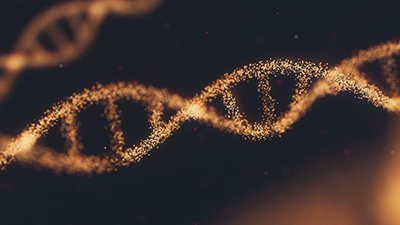
Finding Adam in the Genome: A Response to Chapter 1 of Adam and the Genome
Let’s review the progress we’ve made in this provocative web series. We began by highlighting the critical, gospel-impacting relevance of the debate over the existence of Adam and Eve. This debate was made all the more pressing by the recent publication of Adam and the Genome.1 In this book, the authors argue from genetics (i.e., Dennis Venema’s chapters) and from Scripture (i.e., Scot McKnight’s chapters) that Adam and Eve were not the sole founders of humanity—that humans descend from a population, not an original pair.
Since Venema’s portion of Adam and the Genome failed to engage the published young-earth creation (YEC) literature,2 we began the scientific side of this web series by republishing—see here, here, here, and here—a thorough summary of this literature. We then dealt with the Scriptural side of this debate, before introducing our formal response to Venema’s scientific claims.
In the latter, I made a very provocative claim: that Venema’s scientific claims were actually pseudoscience—because Venema fits scientific facts to preconceived ideas. I also promised to justify this claim with a thorough review of his book.
Applying the Scientific Method to Evolution
In this article, I review chapter 1 (written by Venema and titled “Evolution as a Scientific Theory”) of Adam and the Genome.
Venema begins chapter 1 by introducing his readers to the scientific method. He ties his explanation to his own personal story of discovering how science works. His writing is compelling, and his description is spot on.
His explanation also serves to correct common misconceptions about the differences between scientific hypotheses and scientific theories.
In science, a theory is an explanatory framework for why the facts are the way they are.3
In science, a hypothesis that is not rejected after many, many predictions and tests eventually becomes a broad explanatory framework that has withstood repeated experimentation and that makes accurate predictions about the natural world: in other words, a theory.4
At this point, you might wonder why I would characterize Venema’s claims about evolution as pseudoscience. If his description of the scientific method is correct, how could his conclusions be wrong?
In short, while Venema has the correct definition of science, we will see that he fails in its application.
For example, according to his definition above, evolution is a hypothesis that has not been “rejected after many, many predictions and tests.” Or, to quote Venema more explicitly on this point,
Charles Darwin’s original hypothesis—that modern species share common ancestors and are shaped by natural selection—has withstood over 150 years of vigorous scientific testing and remains a productive explanatory framework in the present.5
To justify this claim, Venema discusses four categories of scientific claims: (1) Venema says fossil transitional forms (like Tiktaalik) have been discovered—a finding which fails to reject evolution; (2) Venema implies that the order of fossils in the fossil record fails to reject evolution; (3) Venema claims that gaps in the fossil record are being filled—again, a finding which fails to reject evolution; and (4) Venema says multiple (e.g., paleontological, embryological) converging lines of evidence fail to reject evolution, further bolstering its scientific strength.
Has Venema applied the scientific method correctly?
Let’s apply it again to his evidences, this time considering competing (i.e., YEC) explanations. For Venema’s arguments to support evolution as a scientific explanation, they would not only have to fail to reject the evolutionary explanation; they would also have to successfully reject the YEC view.
With respect to fossils, Venema gives token acknowledgement of creationist explanations:
Of course, some might argue that it simply pleased God, as Creator, to create a series of unrelated species at this time in earth’s history that happen to suggest an evolutionary relationship.6
I say “token” because Venema’s description is a straw man. Consider this quote from an article that I published over three years ago:
Evolutionists cite so-called “transitional forms” in the fossil record as premier evidence of descent with modification from a common starting point. . . . Evolutionists might . . . assert that we have “no good reason” to think that these creatures were designed.
Yet a trip to a military base—or even to the Wisconsin Dells for a “duck” tour—reveals the error of this reasoning. . . . Not only have intelligent military engineers designed both motorized land vehicles (e.g., tanks and troop carriers) and sea vehicles (e.g., aircraft carriers, destroyers, and submarines), they have also created amphibious assault vehicles. These vehicles are “transitional” in their design in that they blend the characteristics of fully functional land and sea vehicles. Hence, creatures that blend features of two fundamentally different categories of creatures are products of deliberate engineering.7
In other words, Genesis 1 says that God created man in His own image. In light of this fact, we would be justified in looking to the products of human design to understand the principles that God might have employed in designing life. Since humans design “transitional forms,” why wouldn’t God do so as well?
Since humans design “transitional forms,” why wouldn’t God do so as well?
Thus, while the existence of “transitional forms” might fail to reject the hypothesis of evolution, it also fails to reject the hypothesis of design. As we observed in a previous post, this is a type-3 experiment—in other words, pseudoscience.
This fact applies to Venema’s additional claim about fossil gaps being filled in. Since both YEC scientists and evolutionists predict the existence of “transitional forms,” it doesn’t matter how many fossil gaps are filled; none of these filled gaps will distinguish between creation and evolution. (Of course, if gaps never were filled in, evolutionists would have a lot of explaining to do, as Darwin’s own writings reveal. In formal terms of a previous article, the gaps in the fossil record represent a type-2 experiment—the existence of gaps would spell trouble for evolution; the lack of gaps would say nothing about either model.)
Testable Predictions
In his chapter, Venema further criticizes creationist views by claiming that they do not make testable predictions—and, therefore, stifle science. From previous posts (here, here, here, and here) that summarize the technical YEC genetics literature, it should be obvious that is factually incorrect. Furthermore, YEC scientists have made testable predictions in more fields than genetics. For example, in the fields of geology8 and astronomy,9 YEC scientists have made successful predictions.
What about the order of the fossils in the fossil record? The order was actually discovered before Darwin published his book.10 Therefore, it would be nearly impossible to call the order of the fossils a “prediction” of evolution. Instead, both sides in the origins debate look back on this discovery and incorporate it into their model.11 Thus, while the order of fossils might fail to reject the hypothesis of evolution, it fails to reject the hypothesis of creation.
While the order of fossils might fail to reject the hypothesis of evolution, it fails to reject the hypothesis of creation.
Regarding embryology, Venema’s claims fall prey to a similar error. In essence, he claims that whales undergo a developmental process that strongly resembles the developmental process of land mammals. Apart from invoking common ancestry of the two groups, Venema sees no other explanation.
Once again, Venema’s data also fail to reject the YEC explanation.12 Again, the relevant principle in this scenario is the same as the one we explored for “transitional forms.” Since we are made in God’s image, and since we design things like vehicles in “homologous” ways, why should we be surprised if God designs creatures—and their embryological programs—in “homologous” ways?
At this stage, some evolutionists might find fault with this analogy. They would say that the “embryological program” (i.e., the assembly process) for vehicles is shared because it fulfills a shared purpose. Yet, the process of whale development involves stages that seem to serve no purpose whatsoever—except to harken back to evolutionary ancestry. Thus, the embryological development of whales rejects the design hypothesis and fails to reject the evolutionary hypothesis.
The problem with this objection is well known. We covered it in our discussion of genetic function. It’s essentially an argument from silence. Experiments, not silence, are the way to test scientific hypotheses. In up-and-coming fields like modern genetics, evolutionary arguments from silence have a very bad track record.13 In even lesser-studied fields like embryonic development, where even fewer experiments have been performed, this argument seems doomed to failure.
Preconceived Ideas
In summary, while all of Venema’s “evidences” might fail to reject the evolutionary hypothesis, they also fail to reject the YEC explanation. Nevertheless, Venema acts as if these “evidences” turn evolution into a full-fledged scientific theory. By this standard, YEC must also be a full-fledged scientific theory.
In reality, Venema’s claims are nothing more than pseudoscience—similar to claiming that the existence of people proves that evolution is true. For Venema to fail to reject evolution and simultaneously successfully reject YEC, he will have to turn to different evidences.14
Why does Venema make these basic scientific mistakes? We observed above that the answers to Venema’s claims have been in the YEC literature for several years. Yet we also observed in a previous post that evolutionists refuse to read YEC literature. And we discovered that they do so because they apparently think that YEC scientists are liars. Naturally, this leads to ignorance of the opposition—and, effectively, to fitting of facts to preconceived ideas.
Footnotes
Dennis R. Venema and Scot McKnight, Adam and the Genome: Reading Scripture After Genetic Science, Grand Rapids, MI: Brazos Press, 2017.
-
Some examples:
N. T. Jeanson, “Recent, Functionally Diverse Origin for Mitochondrial Genes from ~2700 Metazoan Species. Answers Research Journal 6 (2013): 467–501, https://answersingenesis.org/genetics/mitochondrial-dna/recent-functionally-diverse-origin-for-mitochondrial-genes-from-~2700-metazoan-species/.
N. T. Jeanson, “Mitochondrial DNA Clocks Imply Linear Speciation Rates Within ‘Kinds,’” Answers Research Journal 8 (2015): 273–304, https://answersingenesis.org/natural-selection/speciation/clocks-imply-linear-speciation-rates-within-kinds/.
N. T. Jeanson, “A Young-Earth Creation Human Mitochondrial DNA ‘Clock’: Whole Mitochondrial Genome Mutation Rate Confirms D-loop Results,” Answers Research Journal 8 (2015): 375–378, https://answersingenesis.org/genetics/mitochondrial-genome-mutation-rate/.
N. T. Jeanson, “On the Origin of Human Mitochondrial DNA Differences, New Generation Time Data Both Suggest a Unified Young-Earth Creation Model and Challenge the Evolutionary Out-of-Africa Model,” Answers Research Journal 9 (2016): 123–130, https://answersingenesis.org/genetics/mitochondrial-dna/origin-human-mitochondrial-dna-differences-new-generation-time-data-both-suggest-unified-young-earth/.
N. T. Jeanson and J. Lisle, “On the Origin of Eukaryotic Species’ Genotypic and Phenotypic Diversity: Genetic Clocks, Population Growth Curves, and Comparative Nuclear Genome Analyses Suggest Created Heterozygosity in Combination with Natural Processes as a Major Mechanism,” Answers Research Journal 9 (2016): 81–122, https://answersingenesis.org/natural-selection/speciation/on-the-origin-of-eukaryotic-species-genotypic-and-phenotypic-diversity/.
J. P. Tomkins, “Genome-Wide DNA Alignment Similarity (Identity) for 40,000 Chimpanzee DNA Sequences Queried Against the Human Genome Is 86–89%,” Answers Research Journal 4 (2011): 233–241, https://answersingenesis.org/genetics/dna-similarities/genome-wide-dna-alignment-similarity-identity-for-40000-chimpanzees/.
J. P. Tomkins, “Comprehensive Analysis of Chimpanzee and Human Chromosomes Reveals Average DNA Similarity of 70%,” Answers Research Journal 6 (2013): 63–69, https://answersingenesis.org/answers/research-journal/v6/comprehensive-analysis-of-chimpanzee-and-human-chromosomes/.
J. P. Tomkins, “The Human Beta-Globin Pseudogene Is Non-Variable and Functional,” Answers Research Journal 6 (2013): 293–301, https://answersingenesis.org/genetics/human-genome/the-human-beta-globin-pseudogene-is-non-variable-and-functional/.
J. P. Tomkins, “Alleged Human Chromosome 2 ‘Fusion Site’ Encodes an Active DNA Binding Domain Inside a Complex and Highly Expressed Gene—Negating Fusion,” Answers Research Journal 6 (2013): 367–375, https://answersingenesis.org/genetics/dna-similarities/alleged-human-chromosome-2-fusion-site-encodes-an-active-dna-binding-domain-inside-a-complex-and-hig/.
J. P. Tomkins, “Comparison of the Transcribed Intergenic Regions of the Human Genome to Chimpanzee,” CRSQ 50 (2014): 212–221, https://www.creationresearch.org/comparison-of-the-transcribed-intergenic-regions-of-the-human-genome-to-chimpanzee.
J. P. Tomkins, “Challenging the BioLogos Claim that a Vitellogenin (Egg-Laying) Pseudogene Exists in the Human Genome,” Answers Research Journal 8 (2015): 403–411, https://answersingenesis.org/genetics/dna-similarities/challenging-biologos-claim-vitellogenin-pseudogene-exists-in-human-genome/.
J. P. Tomkins, “Documented Anomaly in Recent Versions of the BLASTN Algorithm and a Complete Reanalysis of Chimpanzee and Human Genome-Wide DNA Similarity Using Nucmer and LASTZ,” Answers Research Journal 8 (2015): 379–390, https://answersingenesis.org/genetics/dna-similarities/blastn-algorithm-anomaly/.
J. P. Tomkins, “Analysis of 101 Chimpanzee Trace Read Data Sets: Assessment of Their Overall Similarity to Human and Possible Contamination With Human DNA,” Answers Research Journal 9 (2016): 294–298, https://answersingenesis.org/genetics/dna-similarities/analysis-101-chimpanzee-trace-read-data-sets-assessment-their-overall-similarity-human-and-possible/.
J. P. Tomkins and J. Bergman, “The Chromosome 2 Fusion Model of Human Evolution—Part 2: Re-analysis of the Genomic Data,” Journal of Creation 25, no. 2 (2011): 111–117, http://creation.com/chromosome-2-fusion-2.
J. Tomkins and J. Bergman, “Genomic Monkey Business—Estimates of Nearly Identical Human-Chimp DNA Similarity Re-evaluated Using Omitted Data,” Journal of Creation 26, no. 1 (2012): 94–100, http://creation.com/human-chimp-dna-similarity-re-evaluated.
J. P. Tomkins and J. Bergman, “Evolutionary Molecular Genetic Clocks—a Perpetual Exercise in Futility and Failure,” Journal of Creation 29, no. 2 (2015): 26–35, http://creation.com/images/pdfs/tj/j29_2/j29_2_26-35.pdf.
J. Bergman and J. Tomkins, “The Chromosome 2 Fusion Model of Human Evolution—Part 1: Re-evaluating the Evidence,” Journal of Creation 25, no. 2 (2011):106–110, http://creation.com/chromosome-2-fusion-1.
J. Bergman and J. Tomkins, “Is the Human Genome Nearly Identical to Chimpanzee?—a Reassessment of the Literature,” Journal of Creation 26, no. 1 (2012): 54–60, http://creation.com/human-chimp-dna-similarity-literature.
N. T. Jeanson, “Human-Chimp Genetic Similarity: Do Shared ‘Mistakes’ Prove Common Ancestry?” Acts & Facts 40, no. 9 (2011): 6, http://www.icr.org/article/human-chimp-genetic-similarity-do-shared.
N. T. Jeanson, “Does ‘Junk DNA’ Exist?” Acts & Facts 42, no. 4 (2013): 20, http://www.icr.org/article/does-junk-dna-exist.
N. T. Jeanson, “Does ‘Homology’ Prove Evolution?” Acts & Facts 42, no. 9 (2013): 20, http://www.icr.org/article/does-homology-prove-evolution.
N. T. Jeanson, “New Genetic-Clock Research Challenges Millions of Years,” Acts & Facts 43, no. 4 (2014): http://www.icr.org/article/8017/.
N. T. Jeanson, “Darwin vs. Genetics: Surprises and Snags in the Science of Common Ancestry,” Acts & Facts 43, no. 9 (2014): http://www.icr.org/article/darwin-vs-genetics-surprises-snags/.
Venema, Adam and the Genome, 3; emphasis in original.
Ibid., 4; emphasis in original.
Ibid., 11.
Ibid., 13.
N. T. Jeanson, “Does ‘Homology’ Prove Evolution?” Acts & Facts 42, no. 9 (2013): 20, http://www.icr.org/article/does-homology-prove-evolution.
For example, see the following.
Prediction:
J. R. Baumgardner, “Numerical Simulation of the Large-Scale Tectonic Changes Accompanying the Flood,” in R.E. Walsh, C.L. Brooks, and R.S. Crowell, eds., Proceedings of the First International Conference on Creationism, Vol. 2 (Pittsburgh, PN: Creation Science Fellowship, 1986), 17–30. Available online: http://www.icr.org/article/large-scale-tectonic-change-flood/.
Fulfillment:
S. P. Grand, “Mantle Shear Structure Beneath the Americas and Surrounding Oceans,” Journal of Geophysical Research 99 (1994): 11591–11621.
J. E. Vidale, “A Snapshot of Whole Mantle Flow,” Nature 370: 16–17, 1994.
P. Voosen, “Graveyard of Cold Slabs Mapped in Earth's Mantle,” Science 354, no. 6315 (2016): 954–955.
For broader overview, see:
A. A. Snelling, “Can Catastrophic Plate Tectonics Explain Flood Geology?” in K. A. Ham, ed., New Answers Book 1 (Green Forest, Arkansas: Master Books, 2006), 186–197, https://answersingenesis.org/geology/plate-tectonics/can-catastrophic-plate-tectonics-explain-flood-geology/.
-
For example, see the following.
D. R. Humphreys, “The Creation of Planetary Magnetic Fields” CRSQ 21, no. 3 (1984):140–149, http://www.creationresearch.org/crsq/articles/21/21_3/21_3.html.
D. R. Humphreys, “The Creation of Cosmic Magnetic Fields,” Proceedings of the Sixth International Conference on Creationism, Creation Science Fellowship, Pittsburgh, PA, and Institute for Creation Research, Dallas, TX, 2008: 213–230, http://www.icr.org/article/cosmic-magnetic-fields-creation/.
D. R. Humphreys, “Planetary Magnetic Dynamo Theories: a Century of Failure, Proceedings of the Seventh International Conference on Creationism, Pittsburgh, PA, August 4–8, 2013. Information and Proceedings available at http://creationicc.org.
See also the following:
D. R. Humphreys, “The Earth’s Magnetic Field is Still Losing Energy,” CRSQ 39, no. 1 (2002): 1–11, http://www.creationresearch.org/crsq/articles/39/39_1/GeoMag.htm.
D. R. Humphreys, “Creationist Cosmologies Explain the Anomalous Acceleration of Pioneer Spacecraft,” Journal of Creation 21, no. 2 (2007): 61–70, http://creation.com/creationist-cosmologies-explain-the-anomalous-acceleration-of-pioneer-spacecraft.
D. R. Humphreys, “Earth’s Magnetic Field Is Decaying Steadily—with a Little Rhythm,” CRSQ 47, no. 3 (2011):193-201, http://www.creationresearch.org/crsq/articles/47/47_3/CRSQ%20Winter%202011%20Humphreys.pdf.
D. R. Humphreys, “More Secular Confusion About Moon’s Former Magnetic Field,” Journal of Creation 27, no. 2 (2013):12–13, http://creation.com/confusion-about-moon-magnetic-field.
See also:
D. R. Humpheys, “Search Continues for a Non-Creationist Solution to the ‘Pioneer Anomaly,” Creation Ministries International, http://creation.com/search-continues-for-a-non-creationist-solution-to-the-pioneer-anomaly.
D. Russell Humphreys, “Mercury’s Magnetic Field Is Young!,” Creation Ministries International, August 26, 2008, http://creation.com/mercurys-magnetic-field-is-young.
D. Russell Humphreys, “Russell Humphreys Answers Thomspon, Schimmrich, et al.,” TrueOrigin.org, 2017, https://www.trueorigin.org/ca_rh_01.php
W. B. N. Berry, Growth of a Prehistoric Time Scale. San Francisco: W.H. Freeman and Company, 1968.
A. A. Snelling, “Doesn’t the Order of Fossils in the Rock Record Favor Long Ages?,” chapter 31 in The New Answers Book 2, Ken Ham, ed., Green Forest, AR: Master Books, 2008, https://answersingenesis.org/fossils/fossil-record/doesnt-order-of-fossils-in-rock-favor-long-ages/.
N. T. Jeanson, “Does ‘Homology’ Prove Evolution?” Acts & Facts 42, no. 9 (2013): 20, http://www.icr.org/article/does-homology-prove-evolution.
Nathaniel T. Jeanson, “Does ‘Junk’ DNA Exist?,” Acts & Facts 42, no. 4 (2013): 20, http://www.icr.org/article/does-junk-dna-exist.
-
With respect to Venema’s other claims in chapter 1—his “two books” analogy and his discussion of the historical debate over heliocentrism—these have been addressed extensively in the YEC literature.
For the logical problems with the “two books” analogy, see the following: Jason Lisle, “The Two-Book Fallacy,” Acts & Facts 42, no. 1 (2013): 9, http://www.icr.org/article/two-book-fallacy.)
Not surprisingly, this YEC rebuttal of the “two books” analogy has itself been criticized. See the following for a rebuttal to the rebuttal of the rebuttal:
Jason Lisle, “The Two Book Fallacy—Again,” July 17, 2017, https://biblicalscienceinstitute.com/apologetics/the-two-book-fallacy-again/.
For the Scriptural problems with the “two books” analogy, see Phil Johnson, “One Book Is Sufficient,” Answers, January 1, 2015, https://answersingenesis.org/apologetics/one-book-sufficient/.
For the logical, historical, and Scriptural deficiencies with Venema’s heliocentrism discussion, see the following references:
Thomas Schirrmacher, “The Galileo Affair: History or Heroic Hagiography?,” Answers in Genesis, April 1, 2000, https://answersingenesis.org/creation-scientists/the-galileo-affair-history-or-heroic-hagiography/.
Danny R. Faulkner, “Geocentrism and Creation,” Answers in Genesis, August 1, 2001, https://answersingenesis.org/creationism/arguments-to-avoid/geocentrism-and-creation/.
Terry Mortenson and Thane Hutcherson Ury, eds., Coming to Grips with Genesis, Green Forest, AR: Master Books, 2008.
Tim Chaffey, “Parallelism in Hebrew Poetry Demonstrates a Major Error in the Hermeneutic of Many Old-Earth Creationists,” Answers Research Journal 5 (July 25, 2012): https://answersingenesis.org/hermeneutics/parallelism-in-hebrew-poetry-reveals-major-hermaneutic-error/.
Recommended Resources

Answers in Genesis is an apologetics ministry, dedicated to helping Christians defend their faith and proclaim the good news of Jesus Christ.
- Customer Service 800.778.3390
- © 2024 Answers in Genesis





